Abstract
In vivo equilibrium dialysis studies were performed to define further the characteristics of calcium binding to bovine albumin. The concentration range for albumin (1 to 9 g/dl) as well as ultrafilterable calcium (0.5 to 2.5 mM) studied encompassed those that might be ordinarily encountered in most clinical situations. Major differences in the regressions of total calcium on ultrafilterable calcium occurred at albumin concentrations of 1, 2, and 9 g/dl but only small differences at albumin concentrations between 3, 5 and 7 g/dl. When albumin concentration was kept constant, the amount of calcium bound to albumin varied directly with ultrafilterable calcium. At any constant ultrafilterable calcium concentration albumin bound calcium varied inversely with the albumin concentrations when albumin was greater than 3 g/dl. Analysis of the data to determine association constants and molar calcium to albumin binding ratios showed that both parameters were dependent on the absolute albumin concentrations. Our results indicate that calcium binding to albumin is a complex process characterised by multiple binding sites whose affinity and binding capacity are variable. These properties suggest that correction of total serum calcium using clinical formulations with fixed calcium to albumin binding ratios may be inappropriate, particularly in hypoalbuminaemic states.
Full text
PDF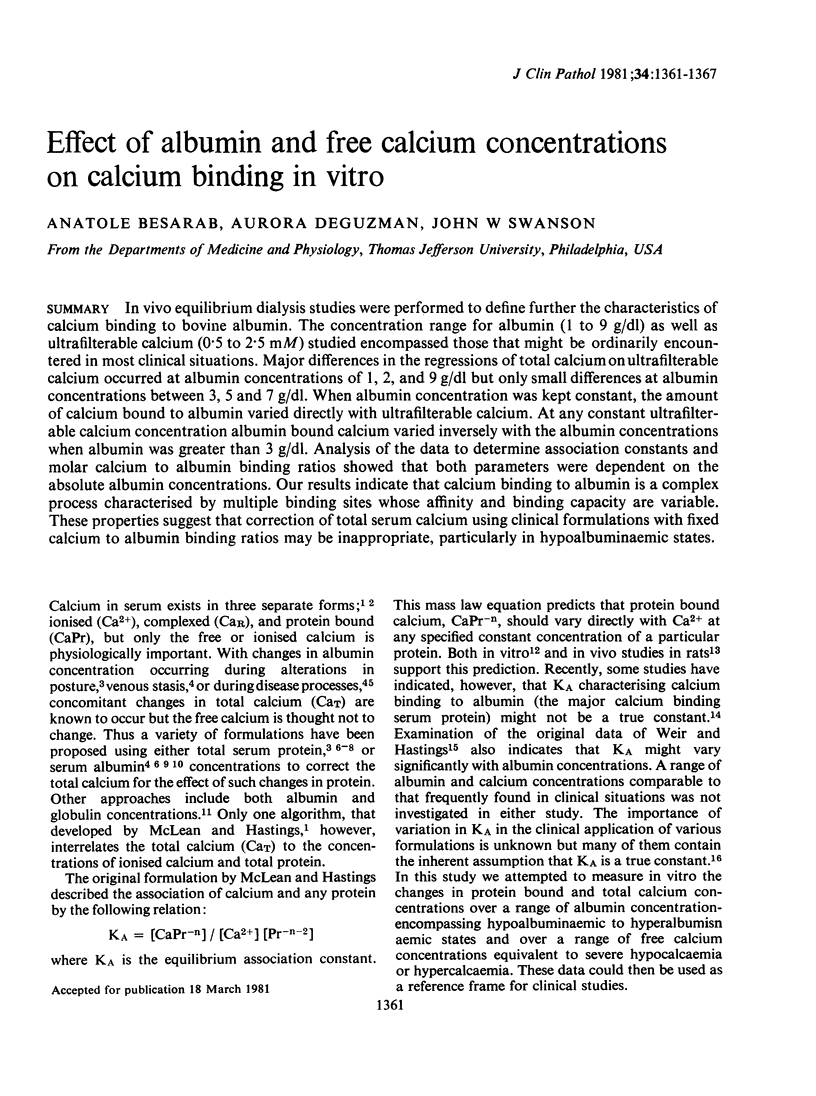
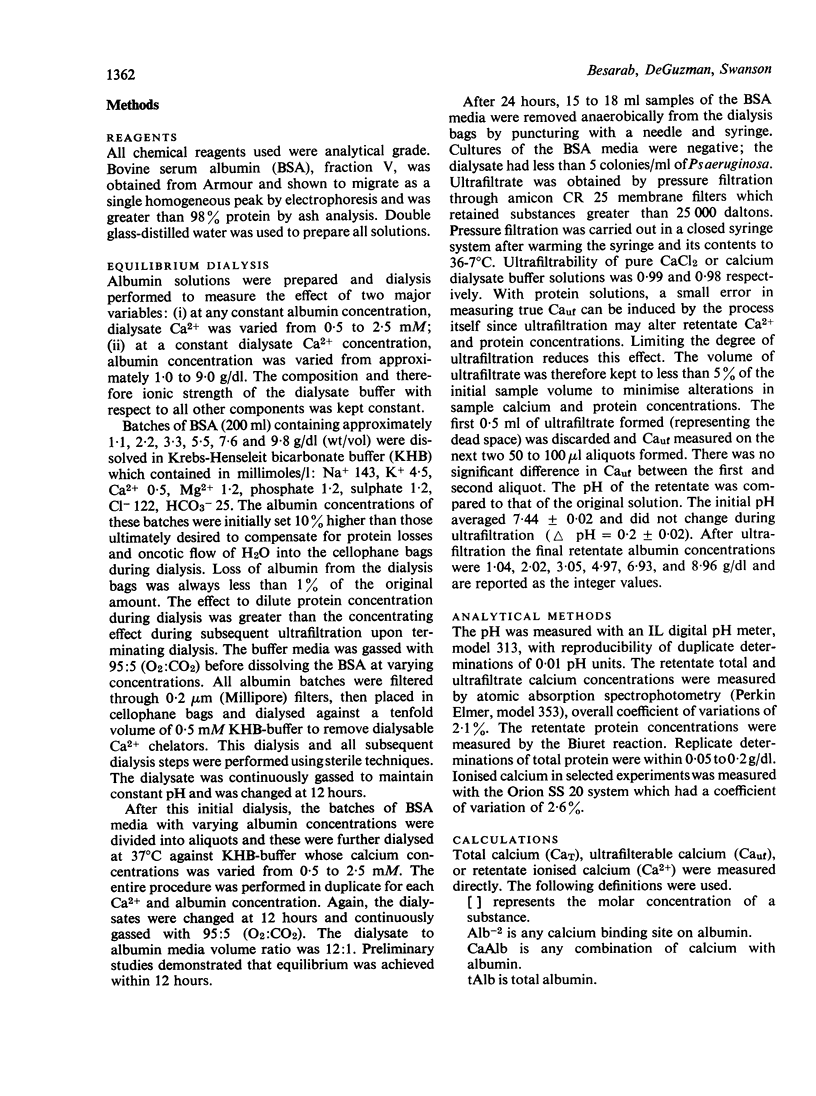
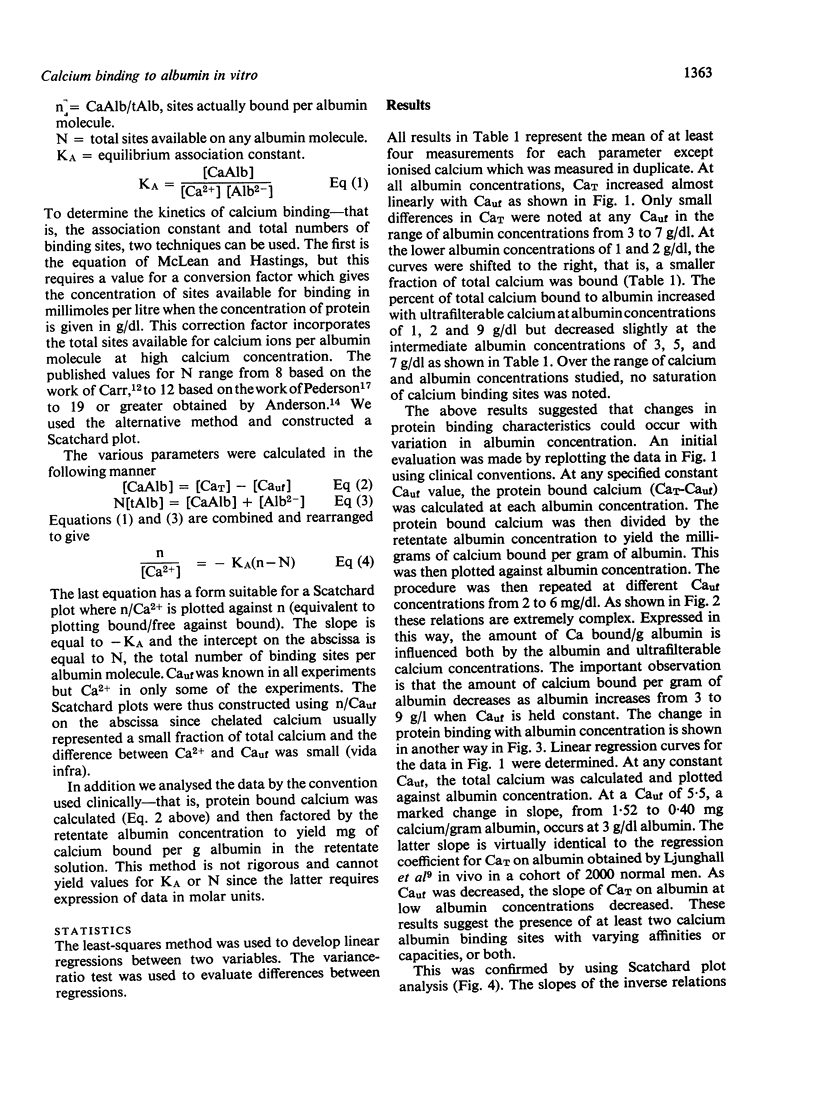
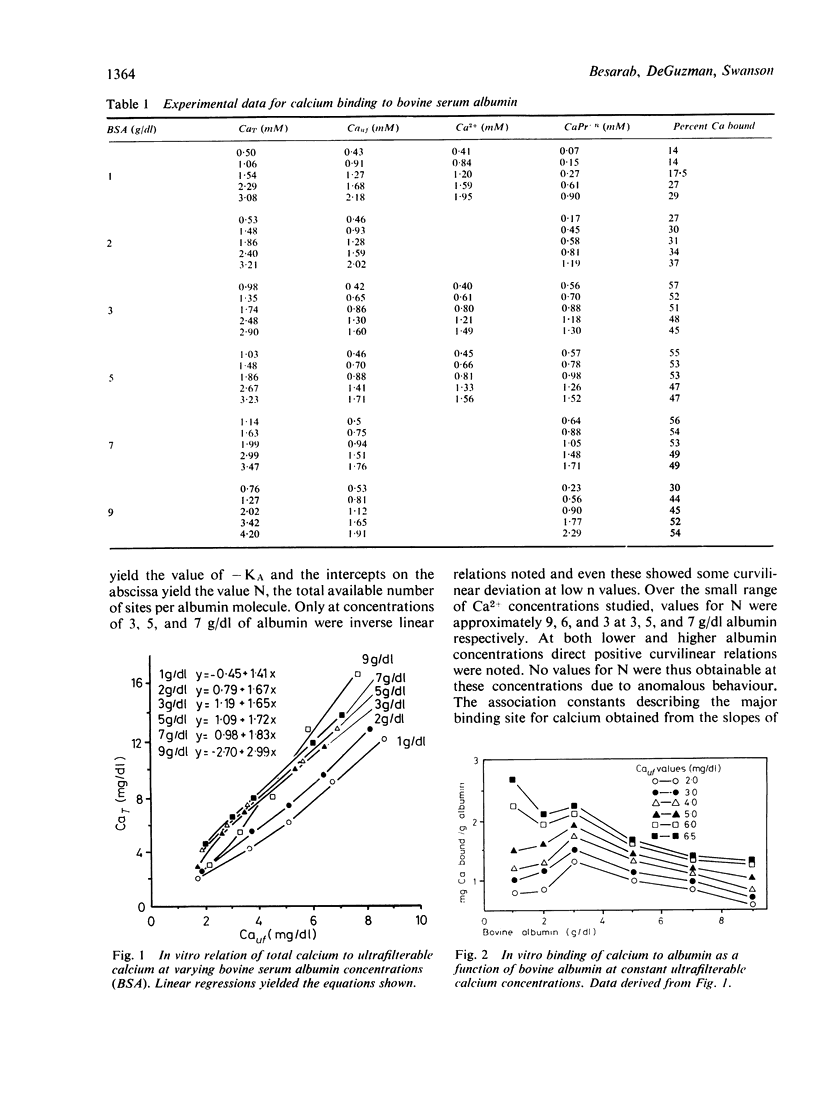
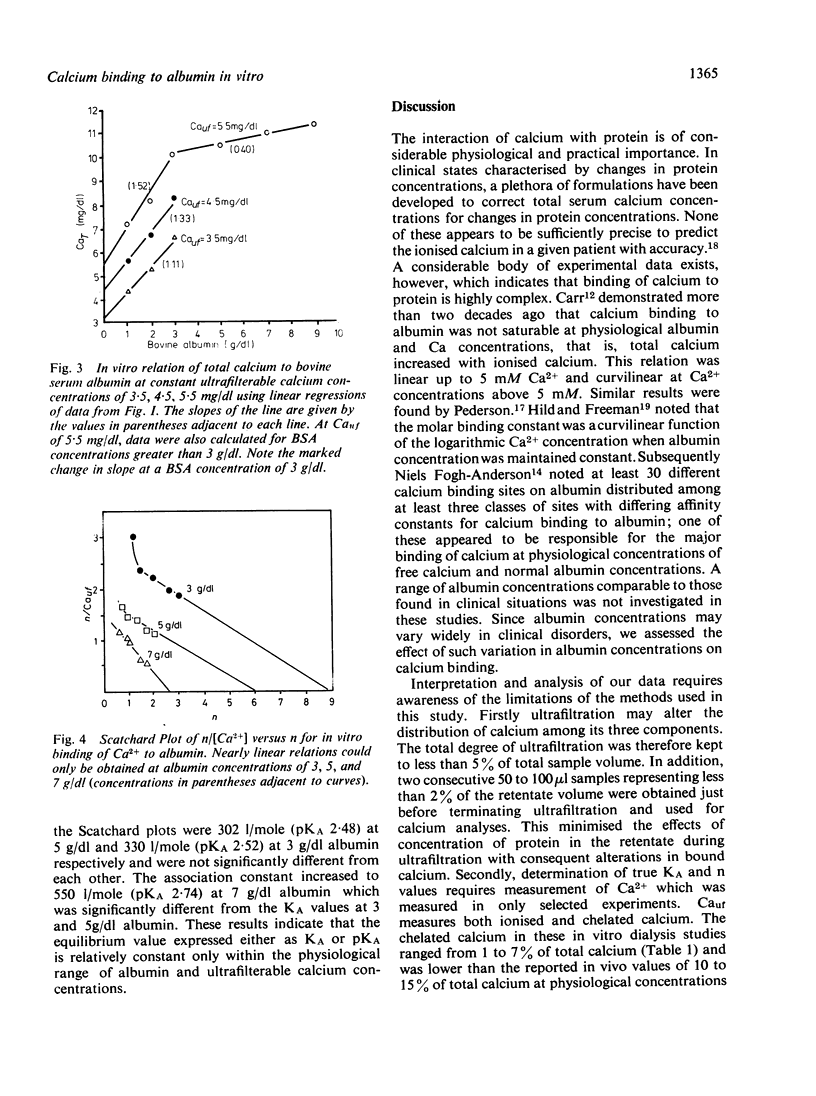
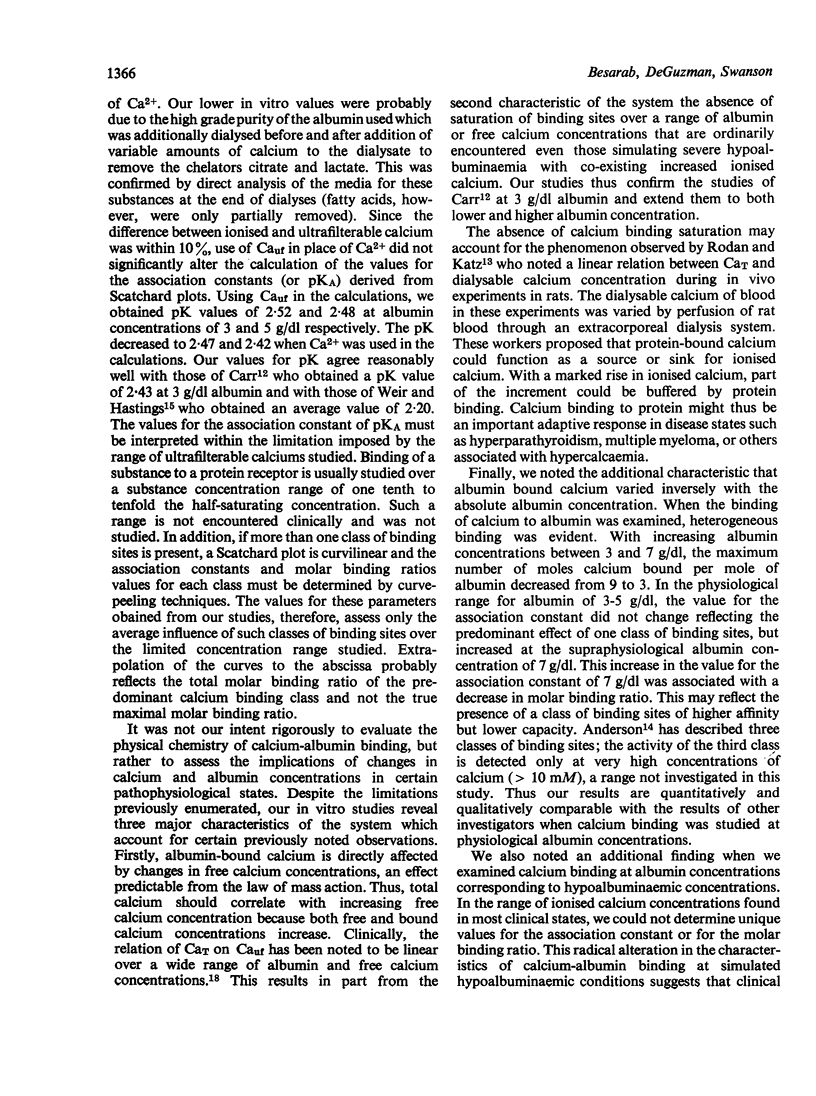
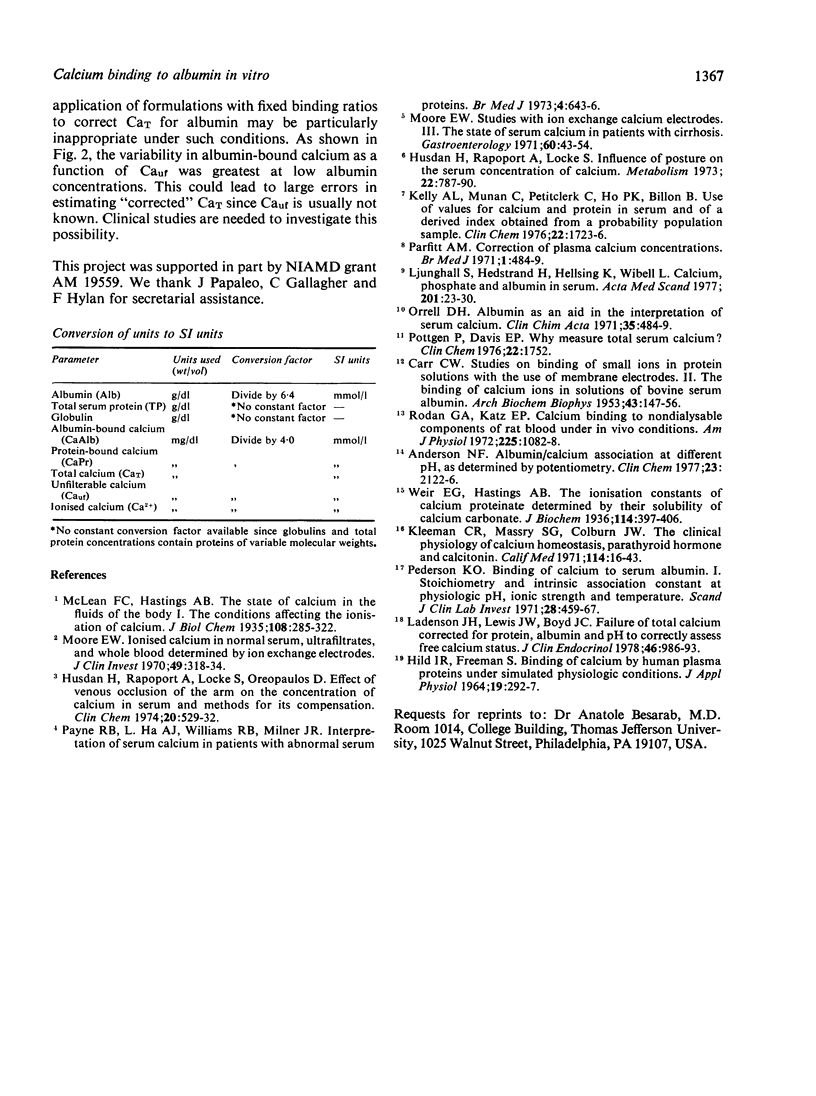
Selected References
These references are in PubMed. This may not be the complete list of references from this article.
- Busdan H., Rapoport A., Locke S. Influence of posture on the serum concentration of calcium. Metabolism. 1973 Jun;22(6):787–797. doi: 10.1016/0026-0495(73)90049-8. [DOI] [PubMed] [Google Scholar]
- CARR C. W. Studies on the binding of small ions in protein solutions with the use of membrane electrodes. II. The binding of calcium ions in solutions of bovine serum albumin. Arch Biochem Biophys. 1953 Mar;43(1):147–156. doi: 10.1016/0003-9861(53)90094-0. [DOI] [PubMed] [Google Scholar]
- Fogh-Andersen N. Albumin/calcium association at different pH, as determined by potentiometry. Clin Chem. 1977 Nov;23(11):2122–2126. [PubMed] [Google Scholar]
- HELD I. R., FREEMAN S. BINDING OF CALCIUM BY HUMAN PLASMA PROTEINS UNDER SIMULATED PHYSIOLOGIC CONDITIONS. J Appl Physiol. 1964 Mar;19:292–296. doi: 10.1152/jappl.1964.19.2.292. [DOI] [PubMed] [Google Scholar]
- Husdan H., Rapoport A., Locke S., Oreopoulos D. Effect of venous occlusion of the arm on the concentration of calcium in serum, and methods for its compensation. Clin Chem. 1974 May;20(5):529–532. [PubMed] [Google Scholar]
- Kelly A., Munan L., PetitClerc C., Ho K. P., Billon B. Use of values for calcium and protein in serum, and of a derived index obtained from a probability population sample. Clin Chem. 1976 Oct;22(10):1723–1727. [PubMed] [Google Scholar]
- Kleeman C. R., Massry S. G., Coburn J. W. The clinical physiology of calcium homeostasis, parathyroid hormone an, and calcitonin. I. Calif Med. 1971 Mar;114(3):16–43. [PubMed] [Google Scholar]
- Ladenson J. H., Lewis J. W., Boyd J. C. Failure of total calcium corrected for protein, albumin, and pH to correctly assess free calcium status. J Clin Endocrinol Metab. 1978 Jun;46(6):986–993. doi: 10.1210/jcem-46-6-986. [DOI] [PubMed] [Google Scholar]
- Ljunghall S., Hedstrand H., Hellsing K., Wibell L. Calcium, phosphate and albumin in serum. A population study with special reference to renal stone formers and the prevalence of hyperparathyroidism in middle-aged men. Acta Med Scand. 1977 Jan;201(1-2):23–30. [PubMed] [Google Scholar]
- Moore E. W. Ionized calcium in normal serum, ultrafiltrates, and whole blood determined by ion-exchange electrodes. J Clin Invest. 1970 Feb;49(2):318–334. doi: 10.1172/JCI106241. [DOI] [PMC free article] [PubMed] [Google Scholar]
- Moore E. W. Studies with ion exchange calcium electrodes. 3. The state of serum calcium in patients with cirrhosis. Gastroenterology. 1971 Jan;60(1):43–54. [PubMed] [Google Scholar]
- Payne R. B., Little A. J., Williams R. B., Milner J. R. Interpretation of serum calcium in patients with abnormal serum proteins. Br Med J. 1973 Dec 15;4(5893):643–646. doi: 10.1136/bmj.4.5893.643. [DOI] [PMC free article] [PubMed] [Google Scholar]
- Pedersen K. O. Binding of calcium to serum albumin. I. Stoichiometry and intrinsic association constant at physiological pH, ionic strength, and temperature. Scand J Clin Lab Invest. 1971 Dec;28(4):459–469. doi: 10.3109/00365517109095724. [DOI] [PubMed] [Google Scholar]
- Pottgen P., Davis E. R. Why measure total serum Ca? Clin Chem. 1976 Oct;22(10):1752–1753. [PubMed] [Google Scholar]
- Rodan G. A., Katz E. P. Calcium binding to nondialyzable components of rat blood under in vivo conditions. Am J Physiol. 1973 Nov;225(5):1082–1088. doi: 10.1152/ajplegacy.1973.225.5.1082. [DOI] [PubMed] [Google Scholar]


